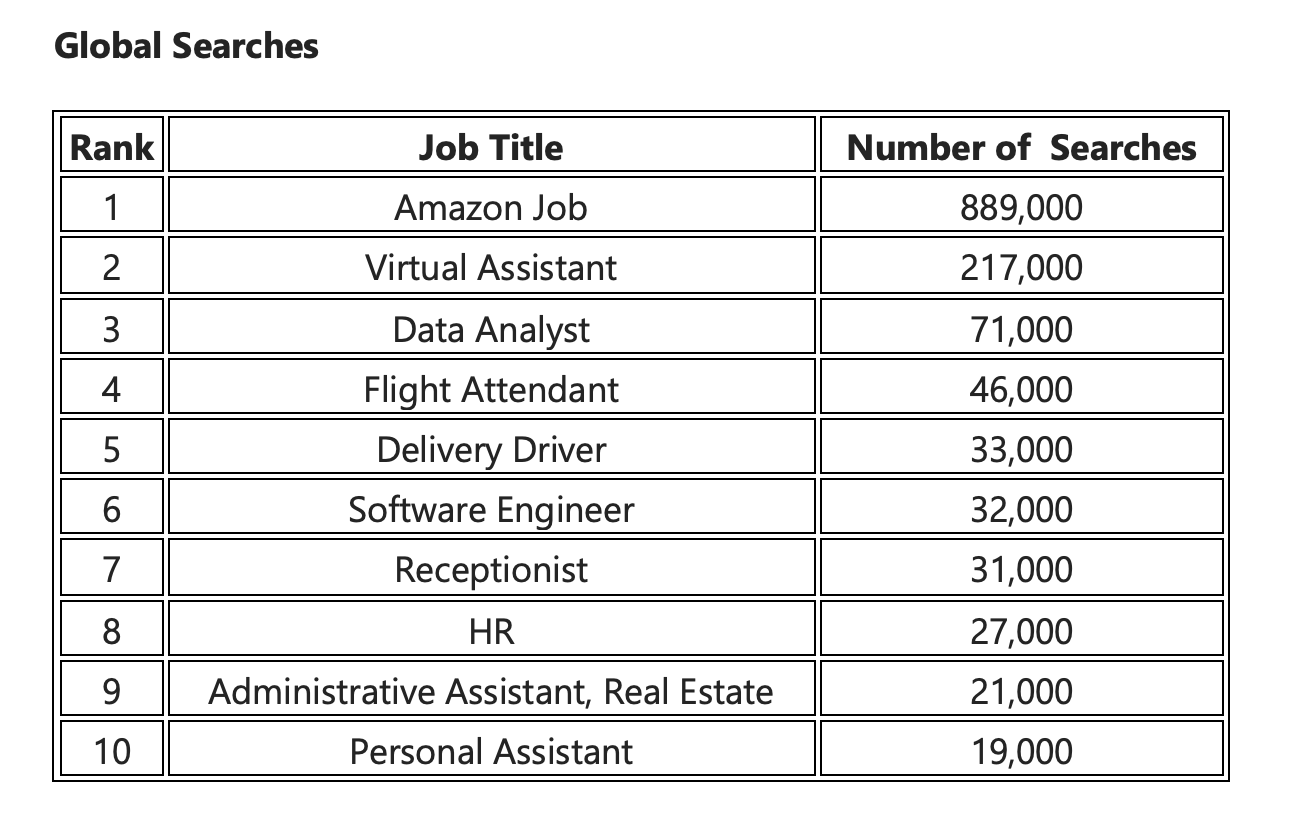
Human resources roles find their way to top 10: report

Jobs at Amazon are easily the most-searched-for roles on Google across the world, according to a new report.
A recent analysis found that Amazon jobs garnered 889,000 searches – well above others on the top-10 list.
It’s likely a lot of people are searching for side hustles that they can do from home, said Vincent Iachetta Jr., president of Peppermonkey Media, which did the report.
"These include being an Amazon selling partner (FBA), customer service associate, or affiliate partner. For the full-timers, there are warehouse roles and delivery jobs, plus positions in marketing, finance, IT, and HR," he said in a statement.
The second most-searched-for job is virtual assistant, with 217,000 searches across Google worldwide. According to the report, the job appeals to home workers and people conversant with computers.
"This type of work is great if you want flexible hours combined with the interest of working on several different projects at once.”

Source: Peppermonkey Media
Coming after that are data analyst roles, with 71,000 searches across the world. The report said this role involves compiling and cleaning data, identifying trends, and solving problems.
Candidates interested in such roles, which are seeing high demand across workplaces, need to be competent with database tools and programming languages, according to the report.
Rounding the top five most-searched roles are flight attendants (46,000 searches) and delivery drivers (33,000).
"Other top global searches are for receptionist roles and jobs in HR and real estate. The key is to find out what necessary skills and training you need for each role, and cultivate the will to succeed," Iachetta said.
To compile the list, Peppermonkey used research from around the web to come up with a list of common job titles. It then used Ahrefs.com to discover the total number of job searches on Google, using keywords formatted as follows: ‘[job title] jobs’. The data was then ranked and placed in tables for ease of reference.